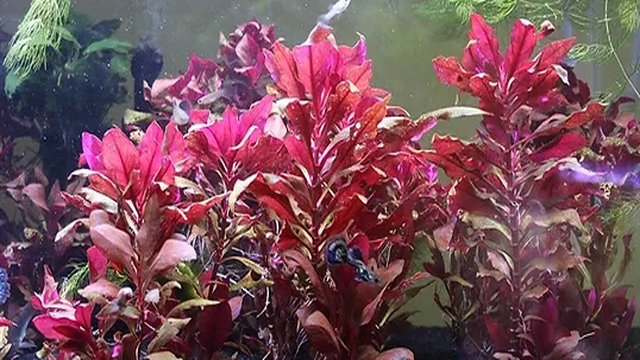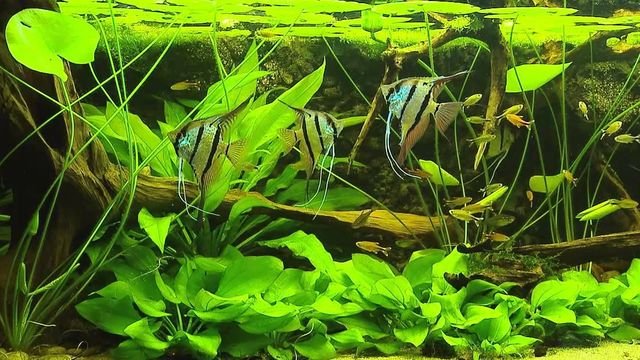Cardamine Aquarium Plant
Did you know that the Cardamine aquarium plant is not only visually stunning, but also offers numerous benefits to your tank? With its vibrant green leaves and delicate flowers, this plant adds a touch of natural beauty to any aquarium.
In this article, we will guide you through the different types of Cardamine plants, their care requirements, and how to plant and propagate them. Get ready to dive into the world of Cardamine and create a thriving underwater oasis.
Key Takeaways
- Cardamine plants require moderate to high lighting conditions and a temperature range of 68 to 75°F (20 to 24°C).
- It is important to maintain stable water conditions with pH levels between 6.0 and 7.5 and regularly fertilize with liquid or root fertilizers.
- When planting and propagating Cardamine, choose a nutrient-rich substrate, firmly plant stems in the substrate, and provide moderate to high lighting levels.
- To maintain a healthy Cardamine aquarium, regularly monitor water parameters, ensure proper nutrient levels, and inspect plants for nutrient deficiencies.
Types of Cardamine Plants
There are several types of Cardamine plants available for your aquarium. These plants are known for their vibrant green foliage and delicate flowers, making them a popular choice among aquatic plant enthusiasts.
One of the most common types is Cardamine lyrata, also known as Japanese cress. This plant has beautiful lobed leaves that resemble a lyre, giving it a unique and attractive appearance. It is relatively easy to care for and can thrive in a wide range of water conditions.
Another popular choice is Cardamine heterophylla, also known as variegated toothwort. This plant features variegated leaves with splashes of white and green, adding a touch of elegance to your aquarium. It requires moderate lighting and regular pruning to maintain its shape and prevent overcrowding.
Cardamine javanica, commonly known as watercress, is another type of Cardamine that is frequently used in aquariums. This plant has small, rounded leaves and delicate white flowers that add a soft and natural touch to your aquatic landscape. It prefers cooler water temperatures and can tolerate slightly alkaline conditions.
Care Requirements for Cardamine
To properly care for Cardamine plants in your aquarium, you need to ensure that their specific needs are met. Cardamine plants require moderate to high lighting conditions, so it is important to provide them with sufficient light. You can achieve this by using fluorescent or LED lights, keeping them on for about 10-12 hours a day. Additionally, Cardamine plants thrive in cooler water temperatures ranging from 68 to 75 degrees Fahrenheit (20 to 24 degrees Celsius). It is crucial to maintain stable water conditions, including pH levels between 6.0 and 7.5, and a hardness of 3 to 8 dKH. These plants also require regular fertilization to ensure their growth and health. You can use liquid or root fertilizers specifically designed for aquarium plants. Lastly, Cardamine plants benefit from regular pruning to prevent them from becoming overgrown and to promote new growth. By meeting these care requirements, you can create a favorable environment for your Cardamine plants to flourish in your aquarium.
Planting and Propagation of Cardamine
To plant and propagate Cardamine, you will need to follow a few simple steps. First, choose a suitable aquarium substrate that is rich in nutrients. Cardamine thrives best in a substrate that is fine-grained and nutrient-rich, such as aquarium soil or a nutrient-rich gravel. Once you have prepared the substrate, carefully plant the Cardamine stems into the substrate, making sure to space them out to allow for proper growth. It is important to plant the stems firmly, ensuring that they are securely rooted in the substrate.
After planting, provide the Cardamine with adequate lighting. This plant requires moderate to high lighting levels to grow properly. You can use LED lights or fluorescent lights to provide the necessary light intensity. Additionally, it is important to maintain a stable water temperature for the Cardamine. Aim for a temperature between 70-78°F (21-26°C) to ensure optimal growth.
Propagation of Cardamine is relatively easy. The plant can be propagated through stem cuttings. Simply cut a healthy stem from the main plant and remove any lower leaves. Then, plant the cutting into the substrate, ensuring that it is firmly rooted. With proper care and maintenance, the cutting will develop roots and grow into a new Cardamine plant.
Maintaining a Healthy Cardamine Aquarium
To maintain a healthy Cardamine aquarium, regularly monitor the water parameters and ensure proper nutrient levels. This is crucial for the well-being of your plants and the overall balance of your aquarium ecosystem. Water parameters such as temperature, pH, and hardness should be checked regularly to ensure they are within the suitable range for Cardamine plants. Use a reliable water testing kit to measure these parameters accurately. Additionally, it is important to maintain proper nutrient levels in the water. Cardamine plants require a balanced supply of nutrients to thrive. Consider using a high-quality liquid fertilizer specifically formulated for aquarium plants. Follow the dosage instructions provided by the manufacturer to avoid over or under-fertilization. Regularly inspect your Cardamine plants for any signs of nutrient deficiencies, such as yellowing leaves or stunted growth. If necessary, adjust the nutrient levels accordingly. Finally, don’t forget to provide adequate lighting for your Cardamine aquarium. These plants need moderate to high lighting conditions to grow properly. Use aquarium lights that emit the appropriate spectrum and intensity for optimal plant growth. By consistently monitoring water parameters, ensuring proper nutrient levels, and providing sufficient lighting, you can maintain a healthy Cardamine aquarium and enjoy the beauty of these aquatic plants.
Tips for Troubleshooting Common Issues
If you encounter any common issues with your Cardamine aquarium, there are several tips for troubleshooting and resolving them. First, if you notice that the leaves of your Cardamine plant are turning yellow and falling off, it could be a sign of nutrient deficiency. To fix this issue, try adding a liquid fertilizer specifically designed for aquarium plants. Additionally, make sure that your aquarium lighting is adequate for the growth of the Cardamine plant. Insufficient lighting can cause the plant to weaken and lose its vibrant color. On the other hand, if you notice that your Cardamine plant is growing too tall and becoming leggy, it could be an indication of excessive lighting or too much nutrients. In this case, try reducing the amount of lighting or fertilizer provided. Another common issue is the presence of algae in the aquarium. To combat algae growth, consider implementing a regular cleaning and maintenance routine. This includes removing any excess debris, performing regular water changes, and ensuring proper filtration. By following these troubleshooting tips, you can overcome common issues and maintain a healthy Cardamine aquarium.
Frequently Asked Questions
How Often Should I Trim My Cardamine Plant?
You should trim your Cardamine plant every 2-3 weeks to maintain its growth and shape. Regular trimming helps prevent overgrowth and keeps your aquarium looking tidy and healthy.
Can Cardamine Plants Survive in Low Light Conditions?
Yes, cardamine plants can survive in low light conditions. They are adaptable and can still grow and thrive with less light. Just make sure to provide adequate nutrition and care for their overall health.
Are Cardamine Plants Suitable for Beginners?
Yes, cardamine plants are suitable for beginners. They are easy to care for and can thrive in a variety of conditions. With some basic knowledge and regular maintenance, you can enjoy their beauty in your aquarium.
Can Cardamine Plants Be Grown in a Fish Tank With Goldfish?
“Can cardamine plants be grown in a fish tank with goldfish? Yes, they can. Goldfish are compatible with cardamine plants as they provide shade and help control algae growth in the tank.”
Do Cardamine Plants Require Fertilizers to Thrive?
Cardamine plants require fertilizers to thrive. You should regularly provide them with the necessary nutrients to ensure their growth and health. Without fertilizers, the plants may not reach their full potential.
Conclusion
In conclusion, diving into the world of cardamine aquarium plants is like embarking on a vibrant underwater journey. With their delicate leaves and vivid colors, these plants bring life and beauty to any aquarium. By following the care requirements and maintaining a healthy environment, you can create a breathtaking underwater oasis. So, take the plunge and watch as your aquarium transforms into a mesmerizing underwater paradise.


